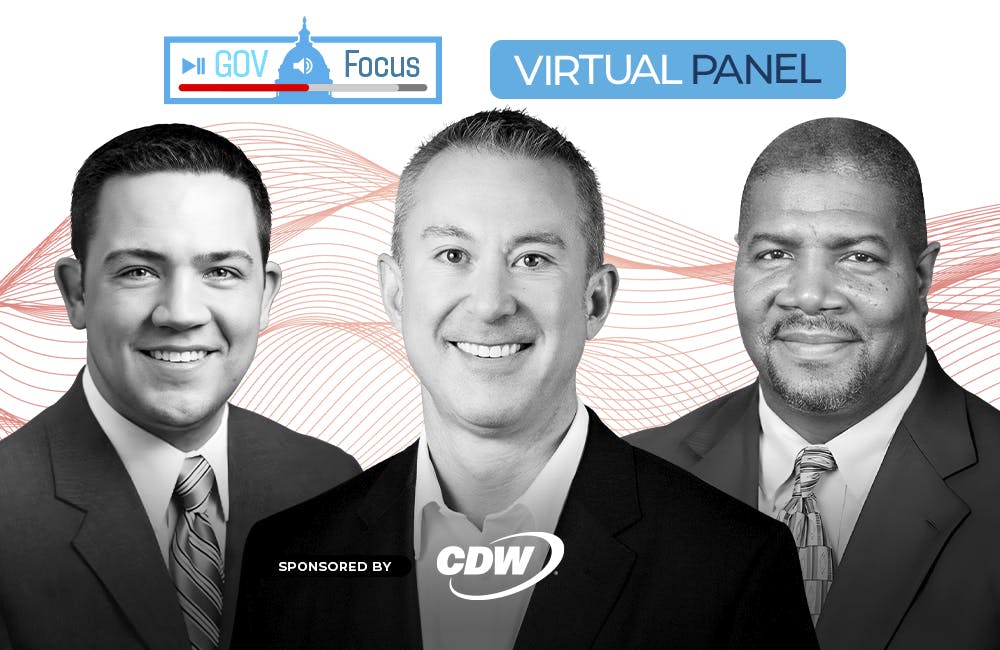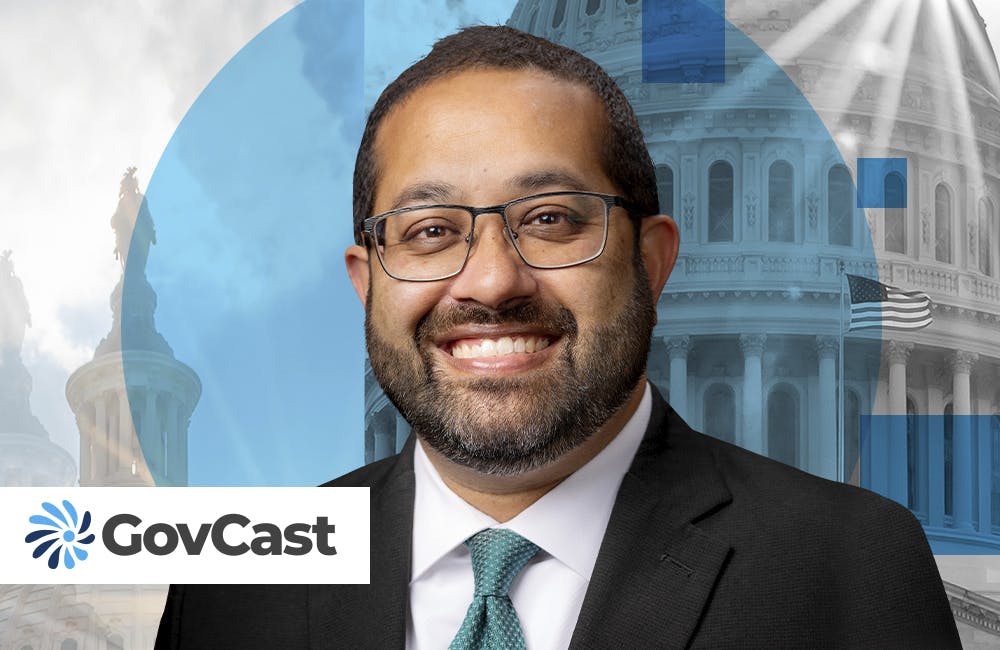Pulling Cybersecurity Tech Out of Valley of Death

There’s a persistent challenge in government, academia and industry to commercialize technology developed in research and development labs. The concept is often referred to as the “Valley of Death,” as the dollars funding these technologies are often lost with the tech itself.
One federal program is tackling this problem, focusing on bringing cybersecurity research in labs to the marketplace. It’s called the Transition to Practice program, and it lives within the cybersecurity division of the Homeland Security Department’s Advanced Research Project Agency.
TTP identifies cybersecurity technologies from federally-funded R&D sources, like the Energy Department National Labs, Defense Department labs, partner research centers and universities. About eight technologies are picked by TTP every year and are taken through training, market validation, testing and evaluation, pilot deployment, and outreach. The tech is introduced to potential partners and investors at a series of tech demo days.
— Sign up for our weekly newsletter to receive the latest analysis and insights on emerging federal technologies and IT modernization.
Ultimately, the hope is these technologies make it into the commercial world, through open source, licensing, startups, adoption by cyber operators and government use — and eventually, help address some of the gaps and issues DHS and the government as a whole has identified in cybersecurity.
Dr. Nadia Carlsten, DHS program manager for the TTP program, said what’s unique about this transition process is its focus on commercialization, unlike some of the other transition programs within government.
“We have the ability and responsibility to go in and pull technology from federal labs and universities, and when we do that, we’re looking at technologies that are most promising from a cybersecurity standpoint and that have the potential to cross over commercially,” Carlsten said.
Carlsten’s background also helps what she does at TTP. She started as an engineer and has been working at the intersection of tech business and intellectual property “pretty much my entire career,” she said, cultivating partnerships with the private sector to move great technologies from the lab to market.
GovernmentCIO Magazine interviewed Carlsten about the TTP program, her role and its mission.
GovernmentCIO Magazine: Where did the need for a program like this stem from?
Carlsten: The whole conversation around the “Valley of Death,” and the fact that government was spending a lot of money on R&D, but there weren’t enough products coming out of all that R&D. There were still gaps that weren’t being met by what was coming out of the labs, and they certainly weren’t being met by things coming out of the private sector, either.
TTP has evolved since it started, but I would say everything that we do in TTP is directed to some of those issues that we see. So as an example, one of the things that was apparent was the fact that most R&D funding is very specific in terms of what researchers can actually use if for, and it’s usually for just doing R&D. It has nothing in there for actual meeting with potential investors or doing transition-type activities like building a prototype or traveling to meet a prospective partner.
So, one of the things that TTP does is fund transition activities, and our funding is actually exclusive to just funding transition activities. Because researchers can use this funding to do that, they actually have an incentive to actually do transition, which they wouldn’t otherwise be able to with just R&D funding. It also provides researchers with exposure to commercialization and licensing, because working with the private sector when you’re in the lab or university is very difficult. We direct that with the pilots we do.
GovCIO Mag: On the TTP website, it says approximately eight new technologies are selected by TTP every year. How do you select the technology, what’s that process like?
Carlsten: So, we go and see what different research labs and universities that we have relationships with have available, but we haven’t made any decision as to how many were actually going to have in the next cohort. We look at several criteria. One of them obviously is the maturity of the technology. So, everything that we take is usually at least at the proof-of-concept stage, so we don’t take things that are as early as ideas. We want something tangible that we can actually test and pilot.
Another thing we look at is commercial potential of the technology. And that’s where my background comes in handy. We’re kind of seeing where investors are investing their money, what the outlook is like for the two- to three-year duration of the program for that technology.
At the end of it, is this going to be something that the market is still interested in? And our pilot partners and network at large, what are their most pressing needs? Are they more concerned about network security, or are they more concerned about quantum computing? We get a feel of their needs by talking to a lot of people in government and in the private sector.
Then, we also make sure that everything that we take is something that actually has the ability to transition to a commercial product — that there’s going to be a market for it, and that we’re going to be able to formulate a sound business model to actually get this technology into the market.
GovCIO Mag: When was the most recent cohort?
Carlsten: The most recent cohort was our 2017 cohort; we announced them in January 2017. So, usually, we select [the technology] a few months before that and that’s when they’re doing their innovation workshops and all of their training, then we put out the Technology Guide in January 2017 and that was when they were all listed.
GovCIO Mag: So, are you now planning for the 2018 cohort?
Carlsten: Yes, and actually each cohort stays in the program for three years; two years where they’re really active and one year that kind of depends on the tech; sometimes, they need a little bit more time. So, at any given moment, we have three cohorts that are active. The 2017 cohort is pretty much getting started. It’s in its first year. They’re still going through the testing activity and they’ll start the market validation activity this year.
GovCIO Mag: What is the outreach like?
Carlsten: One of the most visible things that we do would have to be our demo days. We host these demo events — we have about four to five each year — and we try to go to different cities to target different sectors and types of people. The last one that we had in October was in New York, that one was geared toward the financial sector. Our next one in February is going to be in Silicon Valley targeting investors.
The idea is for people to hear technology presentations. These are pretty fast pitches — they’re not supertechnical — to give people an idea of what the technology is like. Then, in the afternoon, people who are more technically oriented can ask questions and view the technology in action. That usually leads to us having a lot of follow up from people who are interested, sometimes turning into our pilot partners.
GovCIO Mag: What challenges does TTP face when trying to transition these technologies?
Carlsten: There’s definitely lots of challenges. That’s actually why we exist, to help the whole tech transfer challenge and the Valley of Death problem.
One is visibility of the technology. There’s really no way for a regular person from a company or a government organization to know that all of these technologies exist. That’s why we physically go to these places and see everything that they have available, and we’re pulling the very best out. People can just look at our tech guides so they don’t have to go and do all the work that we’ve done.
Another challenge is the fact that the technologies are still early stage, so there’s obviously a lot of risk. There’s technical risk, which we mitigate through doing the technology validation and through the pilots and testing, but there’s also market risk. And that’s probably more of a challenge, because everybody that we deal with from an R&D standpoint is an R&D organization. They’re not necessarily thinking how best to commercialize, and they’re certainly not thinking business models.
When we pull the technologies to market, for a lot of these things, it’s unknown, and we really have to try to find different applications and different partners to figure out what is the best way to turn this into a product.
GovCIO Mag: So, the way that TTP works with the private industry afterward is through pilots?
Carlsten: Pilots are definitely one way that we work with private industry. Another way is through licensing, so private industry can come in and just license the technology that they like. A lot of times, they’ll pilot the technology and if it works out well for them, they’ll go ahead and license it. But we’ve definitely had companies just come in straight to license it without doing the pilot first.
GovCIO Mag: It’s interesting that there’s tech coming out of government that you’re putting in the commercial space. What is the response like from the private sector? Is there any competition?
Carlsten: It has all been really positive. I mean, for them, it’s really a great resource, and allows them to tap into technologies that they wouldn’t otherwise be aware of. And it’s kind of nice, because they get this curated list every year of technologies that have all been validated, they’re all [more] mature than they normally would be if they were to go through a lab.
The other thing is there tends to be more awareness in the last few years with the whole concept of open innovation, and the fact that you don’t have to do all of your R&D in house. You can just go and license something from an external source, and that’ll save you a lot of money on R&D and [it] usually helps you focus more strategically on the technologies that you should be focused on.
GovCIO Mag: Is there any overlap with other agencies in the government trying to modernize their IT systems and the work that you’re doing?
Carlsten: There isn’t an equivalent in any other agency . . . doing the same model. There’s definitely a couple of transition programs that are focused on the intake of technology for their specific agencies, but unlike us, they’re not focused on the commercialization step.
In terms of a program that starts at the early stages we do with technology still at the lab and focuses on commercialization, we’re really the only thing of its kind out there.
GovCIO Mag: Do any agencies come to TTP looking for certain technologies?
Carlsten: Absolutely. We’ve had a lot of interactions with other agencies. They take many forms: We’ve had technology in the TTP portfolio being used with other agencies, [and] we’ve also had other agencies interested in having their technologies as part of TTP because they see the value of the program. We’ve also had agencies approach us about best practices toward tech transition as they’re evaluating whether they should be starting programs like TTP.
GovCIO Mag: What’s the most interesting thing to have come out of the TTP program?
Carlsten: This is like asking somebody to pick one of their children. I’d say one of the coolest things is seeing something that started out in the program as a project that is still in the lab with a prototype that you know literally looks like somebody just glued it together, and now seeing it as an actual product that was scaled up and made operational.
And then seeing the company being established with marketing and demos, and knowing that the reason that company exists and has the product that they’re selling is because they’ve gone through the program.
GovCIO Mag: Is there anything the program is focusing on specifically techwise in the near future?
Carlsten: Historically, we haven’t really focused on any specific areas. The idea was we want to find the best things going on in cybersecurity, and if you look at our portfolio, we have everything from mobile technology to data and critical infrastructure, and everything in between.
We don’t want to be constrained to technology areas because we’re focused on tech still coming out of the lab, so we’re seeing these breakthrough technologies that people are working on. We don’t want to put a label on it and then look for whatever we’ve labeled because we would miss out on a lot of even newer technologies that we wouldn’t even think to put on the list.
That being said, one of the trends that is really interesting is that a lot of solutions that can address cybersecurity issues don’t really have to start as a cybersecurity product. So, one of the things that we’ve been doing, especially over the last year, has been trying to take a broader look at other computing technologies, data analytics technologies, and see how they relate back to cybersecurity solutions. We’re going to keep an eye on things larger than what we think of as just traditional cybersecurity so that we actually find those next-generation solutions, because they’ll probably come out from different disciplines.
GovCIO Mag: Is there anything else you want people to know about the TTP program?
Carlsten: One of the messages we’re trying to get out there is the fact that people in the government and chief information officers in the private sectors can work with us on these technologies, especially when it comes to piloting the technology. And it’s a great process, it benefits both sides, we get the feedback on the technology and they get to use the technology and try it pretty much with no risk. They don’t have to do a commercial license or anything like that before the pilot. And they really get to see if it meets their needs before they actually pursue to a licensing stage.
If they have a higher-level interest in working with TTP and they don’t necessarily see a technology in the TTP catalog that they’re specifically interested in, we’d also be interested in interacting with them just to get a better sense of what their cybersecurity needs are, and what types of technologies they’re looking for, because that informs our next selection cycle.
Visit the TTP website to read about successful technology transfers, view the tech guides and watch videos from the cohorts. If anyone is interested in learning more about the TTP program or getting involved, they can contact Carlsten directly via the contact information on the website or through social media.
This is a carousel with manually rotating slides. Use Next and Previous buttons to navigate or jump to a slide with the slide dots
-

DOD Has a New Cyber Resiliency Assessment Program
Defense officials tout the continuous assessment feature and scalability of the new program amid increased cyber threats.
5m read -

Transitioning Systems for Modern Agency Missions
IT modernization is a constant process necessary for improving customer service, mission delivery and collaboration.
40m watch -

Cyber Resilience and Recovery Amid Evolving Cyber Threats
Data durability is a key aspect of NIST’s cybersecurity framework for public and private organizations.
21m listen -

How Tech Enables Environmental Justice at EPA
The agency wants to eliminate bias and establish new tech standards to reduce greenhouse gas emissions.
39m listen







